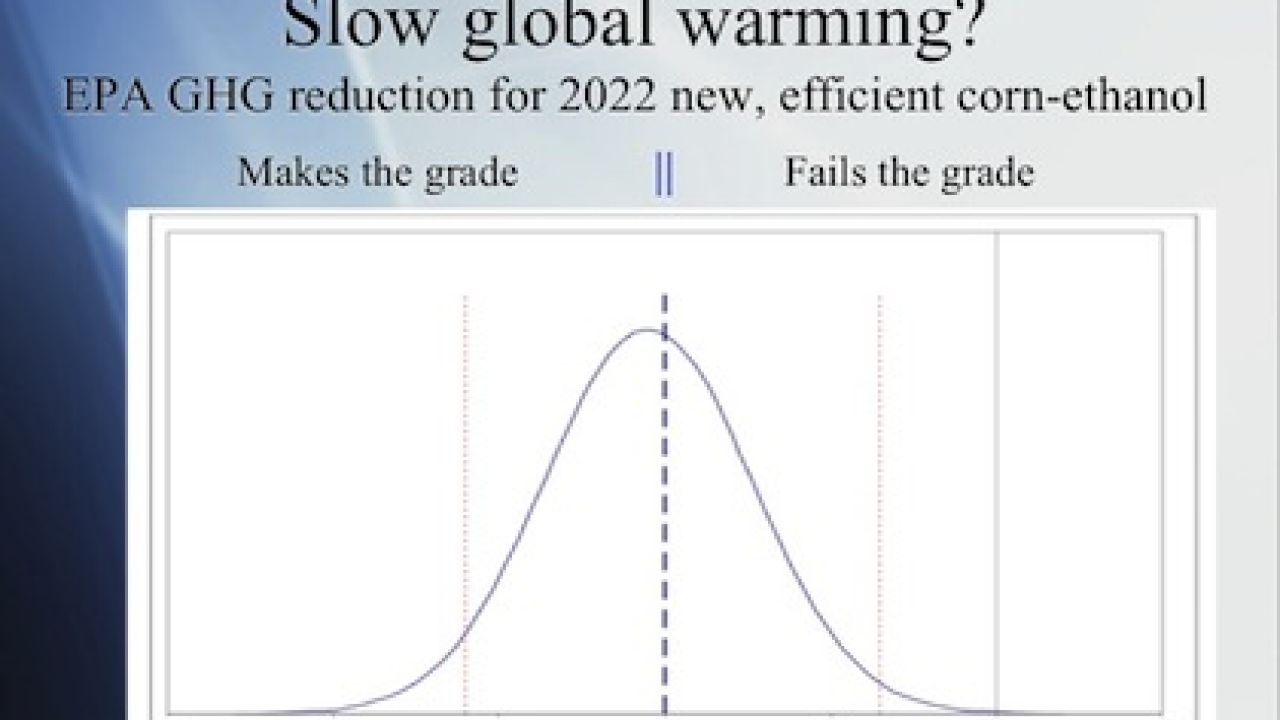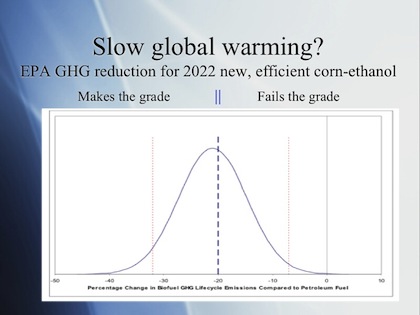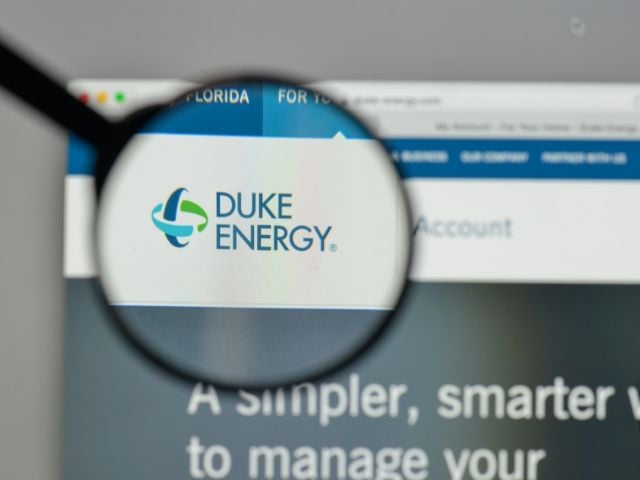
Not so long ago, the Environmental Protection Agency (EPA) did a new life-cycle analysis of corn ethanol to see if the much-subsidized biofuel meets the standard Congress set in the 2007 Energy Bill for reducing greenhouse gas (GHG) emissions. Producers of “renewable fuels” that reduce GHG emissions by set percentages compared to gasoline (as calculated by EPA) get a federally guaranteed market for their products, thanks to federal mandates that force consumers to use those fuels.
The law requires us to burn 36 billion gallons a year of biofuels by 2022, creating an artificial market worth billions of dollars to biofuels producers. On paper, ethanol made from corn must reduce GHG emissions by 20% compared to gasoline. Advanced biofuels like cellulosic and sugar cane must achieve a 50% reduction.
Happily for ethanol makers, EPA’s calculations found that corn ethanol just might make it over the threshold – by a fingernail – with a 21% cut in emissions.
The trouble is, the EPA did not analyze the GHG emissions of any actual corn-ethanol plants or the real-life emissions of the existing corn-ethanol industry as a whole. They rightly concluded that such an analysis would be irrelevant because all that ethanol was grandfathered in under the Energy Independence Act of 2007 whether it reduces GHG emissions or not – in essence exempting ethanol from the renewable fuel standard.
So while the corn ethanol industry gets its financier – the American taxpayer – to believe that tax dollars are fighting climate change, the truth is that EPA didn’t conclude that the ethanol we are using today makes the grade.
Instead of looking at what happens in the real world today, what EPA analysts did was to explore a number of technologies and processes that, if used in combination sometime in the future, could bump corn ethanol over the 20% threshold. For example, extracting corn oil during the ethanol production process means fewer carbon emissions from corn that would otherwise have to be grown on different land and produced elsewhere. This change in land use patterns would boost the GHG reduction capability of corn ethanol.
It’s funny how the ethanol industry embraces land use management concepts that it frequently derides — when it’s to the producers’ benefit.
Other parts of the EPA future calculation looks at using reducing fossil fuels in ethanol production by using renewable technologies like burning biomass instead of coal in the production process. A combination of all these factors would get corn-ethanol over the 20% threshold IF future corn-ethanol producers used them. Conveniently, that calculation came up with the magic number — 21%.
As far as we know, EPA’s futuristic calculations did not factor in the use of cold fusion or dilithium crystals.
In fairness, EPA’s analysis did some things well. Legitimately and credibly, the agency ran its life cycle analysis several different ways, using various combinations of these technologies while varying the assumptions to get a sense of how disparate the results would be. Then they plotted the results of all those model runs to create a bell curve.
The number of variables, however, makes zeroing in on specific reductions harder. In the rule, EPA reports on a case of a corn ethanol plant using the new combinations of technologies it identified. EPA concluded that they were a little better than 50 percent sure that corn-ethanol plants using these more efficient technologies would reduce greenhouse gas emissions by that whopping 21 percent. This means it is just about a tossup whether new corn-ethanol plants using the latest technologies would actually meet the threshold or not.
Not the ringing environmental endorsement the ethanol industry was hoping for.
The EPA is more confident about giving a range for ethanol’s impact on cutting emissions. It said it was 95% sure that the real reductions would be somewhere between a 7% and 32%. Unfortunately, that slim 7% reduction is just as likely as a hefty 32% one.



